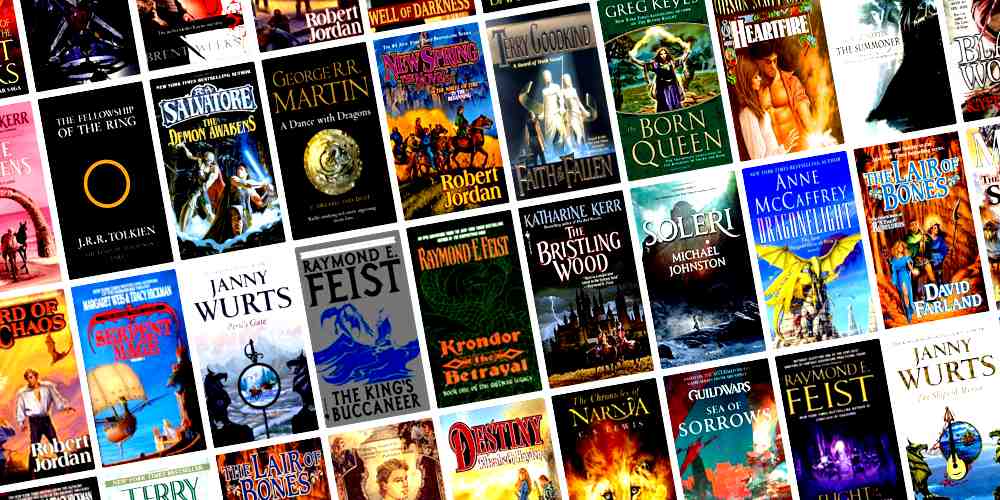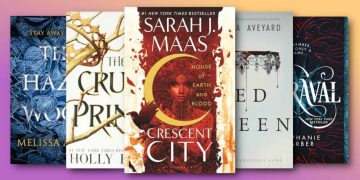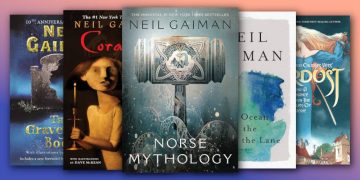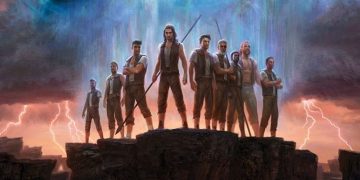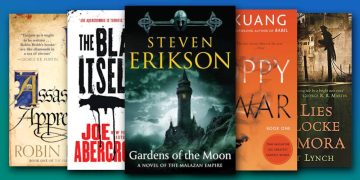Fantasy is huge these days. It's actually been big for a while, but always floating just beneath the surface.
It wasn't until the titanic rise of young adult fantasy series (like Harry Potter, Artemis Fowl, and Grisha) and the resurgence in adult fantasy series (like A Song of Ice and Fire, The First Law, and Mistborn) that fantasy as a genre took the world by storm.
But in many ways, fantasy as a genre has grown TOO big. "Fantasy" encompasses thousands of different books, some which may not share much in common with others. With dozens of fantasy subgenres, no one would blame you for feeling lost in the mix.
Here are some of the most common types of fantasy genres and subgenres that you need to know about if you want to understand the current fantasy book landscape.
While definitions for fantasy genres and subgenres are generally well-defined, they will continue to shift. Keep that in mind as you dive deeper into fantasy over the next few years.
High Fantasy vs. Low Fantasy, Explained
"High fantasy" and "low fantasy" are the broadest terms to describe a work of fantasy fiction. As you can imagine, these terms are vague enough to cause all kinds of misunderstandings and confusion.
Strictly speaking, high fantasy describes a narrative that mainly takes place in a fictional setting outside actual human history (e.g. Middle-Earth or Narnia), whereas low fantasy describes a story where magical elements exist in the real world (e.g. King Arthur).
The confusion comes when readers—especially those new to fantasy—assume that "high" and "low" describe the amount of fantasy in a work (i.e. low fantasy doesn't have much magic). But that's not true! Low fantasy can have lots of magic, as long as it's in the real world.
Within high fantasy and low fantasy, there are dozens of other genres, subgenres, and niches waiting to be discovered. Let's take a look at the most common ones down below.
What Is... Dark Fantasy?
Dark fantasy is a bit of a broad, even vague, term that describes either high fantasy or low fantasy that's blended with elements that are gloomy, murky, dreadful, or horrifying.
Regardless of whether the story is epic in scale or intimate and personal, dark fantasy explores themes that are morbid in nature and intended for mature audiences. It's more of an aesthetic and existential horror than the visceral thrills of mainstream horror.
For dark fantasy, think anything by H. P. Lovecraft or Edgar Allan Poe. There's also Neil Gaiman's The Sandman and Stephen King's The Dark Tower series for examples that are more modern.
When dark fantasy heads toward violent extremes, it can cross into grimdark subgenre (more on that below). Dark fantasy that's taken to non-violent extremes creeps into the weird fiction subgenre.
What Is... Epic Fantasy?
Epic fantasy is often conflated with high fantasy since both genres often overlap, but there are subtle nuances.
Whereas high fantasy describes a story that takes place in a fictional world that isn't part of actual human history, epic fantasy describes the scope of the story, the size of the cast, and the themes explored.
Most "traditional" fantasy falls under epic fantasy, including The Lord of the Rings, The Wheel of Time, Dragonlance, and The Belgariad. They all involve world-scale stakes with lots of characters, and they just happen to take place in fictional worlds.
Due to the scope of storytelling, epic fantasy tends to publish in trilogies or longer. It'd be impossible to weave a tale as complex and vast as A Song of Ice and Fire in just one book!
What Is... Grimdark?
Grimdark is either high fantasy or low fantasy that takes things in a violent direction, often focusing on themes and scenes that are amoral, dystopian, hopeless, and despairing.
Whereas traditional fantasy tends to be heroic, uplifting, and optimistic, grimdark fantasy is brutal, morbid, and cynical. It spawned as a reaction to Tolkien-esque fantasy, which often comes off as too bright, too tidy, and too unrealistic.
Notable grimdark authors include George R. R. Martin (A Song of Ice and Fire), Joe Abercrombie (The First Law), and Glen Cook (The Black Company), who often deconstruct and/or subvert the usual tropes found in traditional fantasy literature.
What Is... Hard Fantasy?
Hard fantasy is a type of fantasy where the rules of the narrative world—whether that world is high fantasy or low fantasy—are rational, knowable, and internally consistent.
As a genre, hard fantasy is analogous to "hard science fiction" in that both strive to maintain a world that makes sense, even under intense scrutiny. In hard fantasy, rigorous worldbuilding leads to fantastical elements that are indistinguishable from advanced science.
That rigor in worldbuilding can apply to the world's history (e.g. The Lord of the Rings), the magic systems (e.g. Mistborn), the genealogies and political structures (e.g. A Song of Ice and Fire), and more.
When hard fantasy becomes too abstract and visible, such as characters having health points and spells inflicting damage points, it crosses the line into LitRPG territory.
What Is... Heroic Fantasy?
When new fantasy readers say "high fantasy," they usually mean something closer to heroic fantasy, which is a type of fantasy where magic is prevalent and there are no modern or contemporary elements.
Heroic fantasy tends to be optimistic and motivational, with themes about perseverence, success, and overcoming adversaries against all odds. Heroic fantasy is bright, adventurous, and hopeful.
Traditional "Dungeons & Dragons fantasy" tends toward heroic fantasy with strong warriors, beautiful maidens, happy-go-lucky bards, and treasures galore to be found in dungeons.
On the flipside of heroic fantasy is sword and sorcery fantasy, which is similarly packed with action and adventure and heroic figures, but with a greater emphasis on violence, romance, and personal stakes.
What Is... Historical Fantasy?
Historical fantasy is a type of low fantasy that incorporates magical or otherwise fantastical elements into stories that are set in an actual historical period of the real world.
Fantasy stories that involve notable historical figures (e.g. King Arthur), real-world mythologies (e.g. Hercules), or notable historical settings (e.g. ancient Rome) can all qualify as historical fantasy.
What Is... Magical Realism?
Magical realism is a genre that leans more toward literary fiction with magical elements, eschewing a lot of the tropes that are common in fantasy genre stories.
Magical realism strives to paint a realistic portrait of the modern world, centering on stories that are character-driven yet include a few elements that are supernatural, magical, or otherwise unusual. In other words, "real" stories invaded by the fantastical.
One of the most notable authors of magical realism is Haruki Murakami, the Japanese author who's earned international renown for his surreal and borderline absurd novels.
What Is... Paranormal Romance?
Paranormal romance is a hybrid genre that's heavy on the tropes found in typical romance novels, while injecting fantastical elements that are common in speculative fiction.
Most paranormal romance takes place in the real world that's invaded by paranormal beings, such as vampires, werewolves, ghosts, shapeshifters, or even time travelers. Other less common elements include supernatural abilities, like clairvoyance or telekinesis.
The primary focus of paranormal romance is always on romantic relationships, and the plot almost always wraps up with a Happily Ever After (HEA) or Happy For Now (HFN) ending.
What Is... Science Fantasy?
Science fantasy is a type of fantasy that combines traditional fantasy tropes with elements of science fiction. That could include deep space as a setting, advanced technology or magitek, etc.
Often, science fantasy is presented as more toward science fiction, yet contains plot devices that violate real-world physics. Those impossibilities are usually hand-waved using technobabble.
Star Wars is the ultimate example of science fantasy, which is inwardly a fantasy story packaged as a space opera.
What Is... Steampunk?
Like science fantasy, steampunk is a type of fantasy that incorporates science fiction elements, except the emphasis is more on industrial-era technology rather than modern or futuristic technology.
Steampunk stories often present an alternative timeline of Victorian England—sometimes called Neo-Victorian—that features retrofuturistic inventions like steam cannons, primitive robots, and airships.
On top of that, there may be magical elements in the mix, such as crystal-powered engines or occult rituals.
What Is... Urban Fantasy?
Urban fantasy is a type of fantasy where supernatural entities co-exist with the modern real world, usually hidden from view but accessible through portals, gates, artifacts, etc. The supernatural beings may even have their own societies, such as a spirit world.
Urban fantasy can trace its roots back to the occult detective stories of the 1940s and 1950s, whose influence can still be felt today in modern fantasy series like Anita Blake and The Dresden Files.
Urban fantasy is an immenseful popular subgenre for today's young adult fiction, with notable examples including Harry Potter, The Mortal Instruments, Percy Jackson and the Olympians, Skulduggery Pleasant, and Magic Ex Libris.
